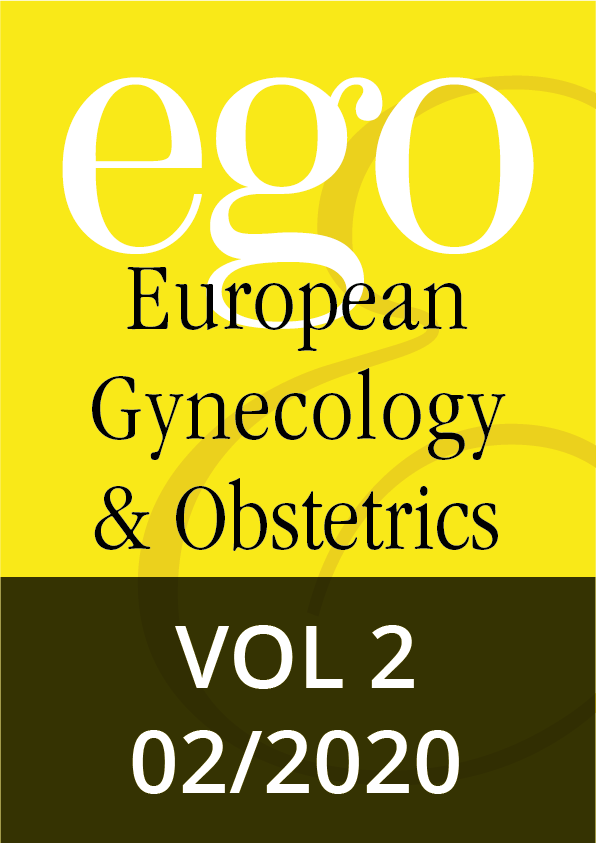Editorial, 03-04 | DOI: 10.53260/EGO.202011
Editorial, 071–072 | DOI: 10.53260/EGO.202021
Short reviews, 073–076 | DOI: 10.53260/EGO.202022
Short reviews, 077–081 | DOI: 10.53260/EGO.202023
Short reviews, 082–089 | DOI: 10.53260/EGO.202024
Short reviews, 090–093 | DOI: 10.53260/EGO.202025
Case reports, 094–097 | DOI: 10.53260/EGO.202026
Case reports, 098–100 | DOI: 10.53260/EGO.202027
Short reviews, 10-15 | DOI: 10.53260/EGO.202013
Case reports, 101–104 | DOI: 10.53260/EGO.202028
Fertility and pregnancy in patients with familial adenomatous polyposis (FAP)
Abstract
Background: Familial adenomatous polyposis (FAP) requires extensive colectomy or proctocolectomy at a relatively young age to prevent colon cancer. Many affected women may not yet have started a family and will have concerns regarding their fertility potential, the effect of surgery on fertility and what type of surgery is most suitable, as well as the likelihood of experiencing a normal pregnancy and successful delivery.
Objective: The aim of this study was to summarise the current knowledge on the fertility potential (including pregnancy and delivery) of young, female patients with FAP, before and after treatment. Design and setting: A literature review was performed, summarising current knowledge on the fertility potential of young, female patients with FAP, before and after treatment.
Results: Contrary to what is indicated in current international guidelines, the present research revealed that women with FAP do not have a reduced chance of pregnancy before treatment, after colectomy with ileorectal anastomosis, or after proctocolectomy with ileal pouch-anal anastomosis. Pregnancy complications are not significantly increased, and vaginal delivery can be considered following careful assessment.
Conclusions: Despite only limited data being available, women with FAP can be reassured that their fertility potential is not affected by the disease. Current guidelines do not reflect the state-of-the-art knowledge on fertility and pregnancy in FAP patients and do not provide management tools to healthcare professionals. We recommend that clinicians and patients discuss the topic of fertility and pregnancy at the appropriate time before making a decision on surgery and also that further studies should be conducted, and the international guidelines amended.
ISSUE 2020/02

Editorial, 03-04 | DOI: 10.53260/EGO.202011
Editorial, 071–072 | DOI: 10.53260/EGO.202021
Short reviews, 073–076 | DOI: 10.53260/EGO.202022
Short reviews, 077–081 | DOI: 10.53260/EGO.202023
Short reviews, 082–089 | DOI: 10.53260/EGO.202024
Short reviews, 090–093 | DOI: 10.53260/EGO.202025
Case reports, 094–097 | DOI: 10.53260/EGO.202026
Case reports, 098–100 | DOI: 10.53260/EGO.202027
Short reviews, 10-15 | DOI: 10.53260/EGO.202013
Case reports, 101–104 | DOI: 10.53260/EGO.202028
